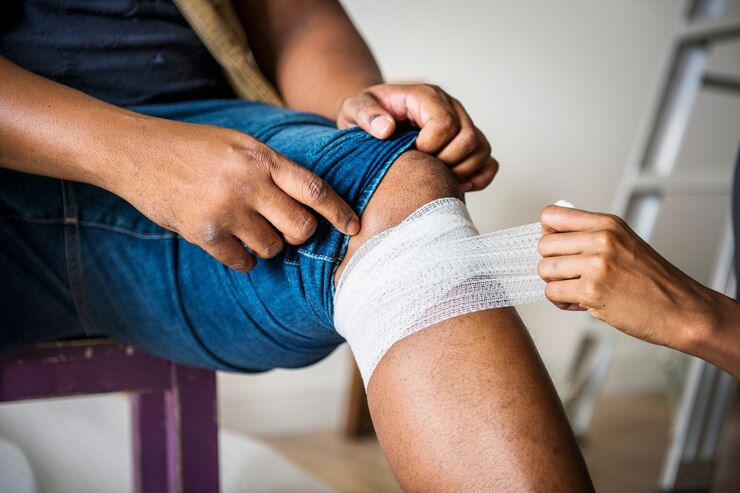Timely Intervention For Common Illnesses And Injuries: Signs That You Require Urgent Care
Health is unquestionably one of our most valuable possessions hence, we must recognize when we want immediate medical assistance for common diseases and accidents.
Although several mild diseases may be handled with rest and over-the-counter drugs, there are times when prompt medical attention is required. It makes recognizing the signs and symptoms that indicate the need for urgent treatment essential as they affect your recovery and general well-being.
This post examines some of the most frequent diseases and injuries requiring urgent care and we will explain their warning signs. Understanding them may allow you to make more educated decisions about obtaining medical attention when necessary, resulting in a faster recovery and fewer problems.
Contents
Common Cold

Every year, millions of individuals are affected by the common cold but barely seek medical attention as it is often mild. What you fail to notice is that when accompanied by high fever, an intense headache, a persistent cough, chest discomfort, or shortness of breath common cold can indicate an underlying illness such as COVID, bronchitis, or pneumonia. Because of this, you should pay attention and monitor your cold, then immediately seek medical assistance if symptoms persist.
Sprains and Strains
Sprains and strains are frequent trauma injuries, especially among sports and active people. They may be treated with rest, ice, compression, and elevation (RICE) for minor injuries. However, there are times when you should seek immediate medical attention.
Seek medical help if you have extreme discomfort, cannot bear weight on the afflicted leg, have substantial swelling, or suspect a fracture. You can get this by getting consultations from clinics. The prompt examination and treatment can aid in preventing long-term problems and promoting appropriate recovery.
Throat Ache

Throat ache is a common symptom frequently caused by viral infections. Since it is one of the most frequently occurring illnesses, we have, over time, learned to treat it with rest and over-the-counter medications. However, a good number of sore throat cases qualify as severe.
Your throat ache becomes severe when it lasts more than a week or is accompanied by trouble swallowing, a high temperature, or enlarged tonsils with white patches. It might be a symptom of a bacterial infection, making it essential to seek immediate medical attention as it may require antibiotics.
Sinus Infection
Sinus infections, often known as sinusitis, can cause face pain and congestion. Viruses cause most instances and may be resolved independently or with home treatments. However, if your symptoms increase after a week, or if you have a severe headache, facial swelling, high fever, or continuous nasal discharge that is thick and brownish, you may have a bacterial sinus infection. Such instances frequently need antibiotic therapy; quick medical intervention can avert complications.
Influenza

Influenza, sometimes known as the flu, is a common viral infection that can cause severe consequences in some people. As much as most flu patients recover without medical assistance, some warning symptoms should encourage you to seek immediate medical attention. These include breathing difficulties, severe chest discomfort, prolonged vomiting, disorientation, a high temperature that does not reduce with medicine or symptoms that ease but return with greater intensity. If you notice any of these symptoms, getting medical attention will help you avoid being vulnerable to any secondary illnesses that may result from influenza.
Bronchitis
Bronchitis is a viral infection-induced inflammation of the bronchial tubes that causes acute chest pain, high fever, blue lips or fingertips, and trouble breathing. The inflammation produces prolonged coughing, wet coughing, and aching ribs. You may also experience fatigue and chills. If your body indicates these symptoms and they persist or increase, they may suggest a more serious respiratory ailment that needs emergency medical treatment. Ensure you get professional medical care in such times.
Related: Stay Connected And Protected: How Medical Alert Devices Enhance Senior Care
Skin Infections
Skin infections occur when bacteria, fungus, or viruses enter a hole in the skin, often cutting, scraping, insect biting, or scraping rashes. Some of them frequently respond well to over-the-counter medication. Regardless, it is always essential that if you have a skin infection or cutting, you get medical attention straight away as treating it on your own may not give it the attention it needs.
Therefore, watch out for indications such as fast-spreading redness, warmth, swelling, or the formation of abscesses or boils and nonhealing wounds, as they imply you should seek immediate medical attention. Keep these things in mind to help prevent an infected cut or scrape. Remember, if left untreated, severe skin infections can cause significant problems and necessitate more extreme medical intervention.
Conclusion
Although many of these diseases we get may be treated at home, it is critical to recognize the signals suggesting immediate medical attention. Knowing them will help you seek and receive the proper treatment, preventing fatal illnesses. Remember that your health is worth the effort, so don’t be afraid to seek emergency treatment when necessary.
Read Also:
- 5 Beginner First Aid Mistakes And How To Avoid Them
- What are The Differences Between Physiotherapy and Massage Therapy?
- The Nursing Field Is Oversaturated! How To Stay Relevant and Earn More In Nursing



